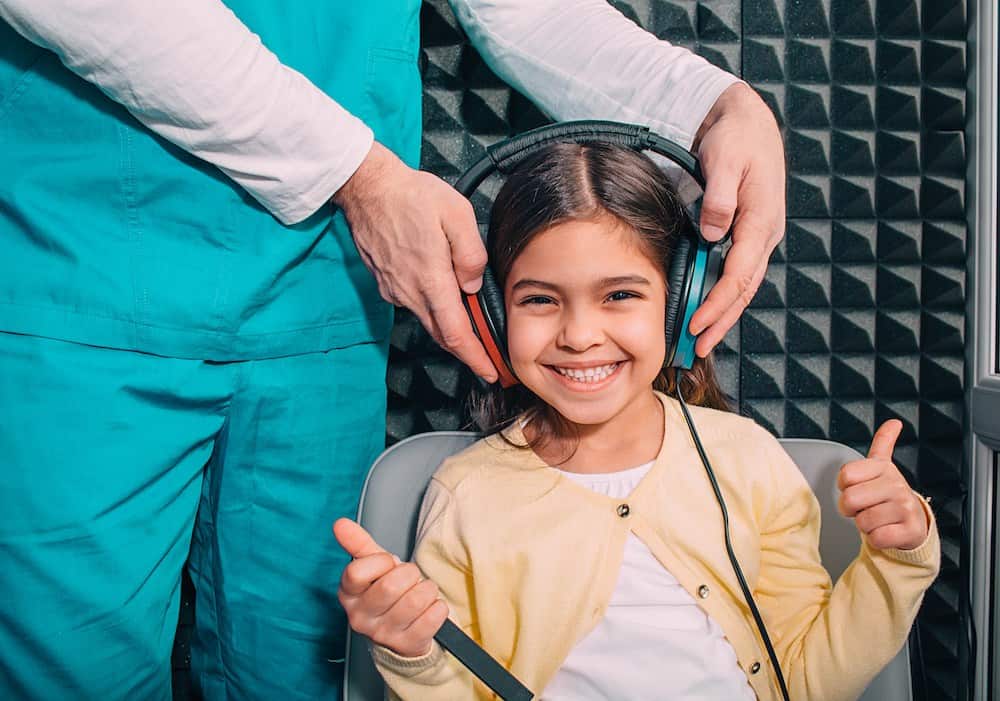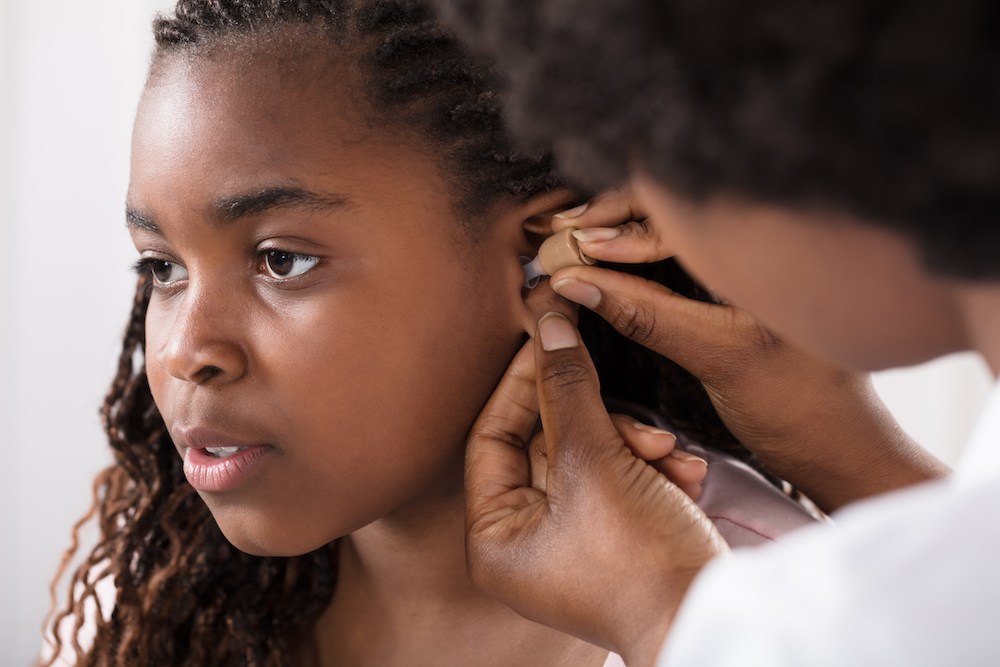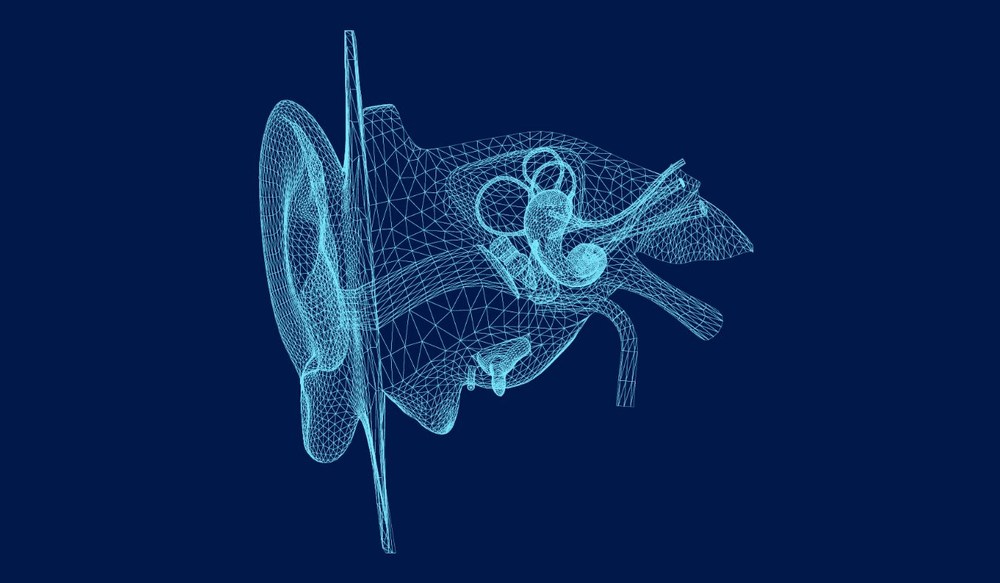The Future of Hearing Aid Personalization
Hearing aids have come a long way from the one-size-fits-all approach of

By: admin | October 30, 2024
Imagine you’re living in a rural area, miles from the nearest audiologist, or you’re a busy professional who can’t seem to find time for a hearing test. Perhaps you’re caring for an elderly parent who finds it challenging to travel to medical appointments. These scenarios are all too common, and they highlight why teleaudiology – the practice of providing hearing care services remotely – has become increasingly important.
Enter 5G technology, the latest advancement in wireless communication. Just as video calls have transformed how we connect with loved ones, 5G is set to revolutionize how we access healthcare, including hearing services. This powerful network could be the key to making remote hearing tests more accessible, reliable and effective for people in various circumstances.
Whether you’re tech-savvy or just curious about the future of hearing care, understanding the potential of 5G in teleaudiology could open up new possibilities for managing your hearing health.
5G technology represents a significant advancement in wireless communication, offering faster speeds and lower latency than its predecessors. This enhanced connectivity has the potential to reshape various sectors, particularly in healthcare, where it can facilitate remote consultations and real-time patient monitoring. With the ability to support a greater number of devices simultaneously, 5G can significantly improve the accessibility and efficiency of medical services, enabling innovative solutions like telehealth and seamless sharing of medical data to become more reliable and widely adopted.
The functioning of 5G technology is based on a combination of several key components. One of the core elements is the use of higher frequency bands, particularly in the millimeter-wave spectrum, which allows for faster data transmission. However, these higher frequencies have a shorter range and are more susceptible to obstacles, prompting the deployment of more base stations to ensure comprehensive coverage. 5G networks also utilize advanced technologies like beamforming, which directs signals to specific devices rather than broadcasting them broadly, enhancing efficiency and reducing interference. Additionally, 5G supports a larger number of connections through innovations like network slicing, which enables the creation of virtual networks tailored for specific applications or services.
Overall, 5G technology is set to transform how we connect and communicate, offering unprecedented speed and capacity that can support a wide array of applications and services across various industries.
Teleaudiology is a branch of telehealth that utilizes technology to deliver audiology services remotely. This innovative approach allows audiologists to assess, diagnose and treat hearing-related issues without requiring patients to visit a clinic physically. By leveraging video conferencing, smartphone applications and specialized software, teleaudiology facilitates a wide range of services, making hearing care more accessible and convenient.
Among the services included in teleaudiology are hearing evaluations, hearing aid fittings and follow-up consultations. Audiologists can conduct hearing tests using online platforms that may involve sound detection and frequency response assessments. They can also assist in selecting and fitting hearing aids through remote programming and provide ongoing support, like adjustments and troubleshooting.
Additionally, teleaudiology can offer educational resources, hearing health counseling and guidance on communication strategies, enabling patients to better manage their hearing health from the comfort of their homes. Overall, teleaudiology enhances access to care, making it easier for individuals to receive the support they need for their hearing needs.
With technological advancements, these tests have become more precise. To alleviate your concerns, it’s a good idea to use a reputable platform for your remote hearing test. This can give you confidence in the results and guide you in managing your hearing health.
Remote hearing tests are an integral part of teleaudiology, providing a convenient and accessible way to assess hearing health from home. These tests typically involve listening to a series of sounds through calibrated headphones, allowing you to determine which frequencies and volumes you can hear. As technology advances, the reliability of these remote tests has significantly improved, making them a practical option for initial assessments and ongoing monitoring of your hearing health.
One of the main advantages of remote hearing tests is the convenience they offer. You can complete the assessment without the hassle of travel or long waiting times, allowing you to prioritize your hearing health on your own schedule. While these tests are not a substitute for comprehensive evaluations by an audiologist, they can serve as valuable screening tools. By providing immediate insights into your hearing abilities, remote tests help you understand whether you need to seek further evaluation, enabling you to take proactive steps in managing your hearing health.
5G technology significantly enhances telehealth services, offering numerous benefits that improve the quality and accessibility of healthcare, including teleaudiology. One of the most notable advancements is the increased speed and reliability of data transmission. With 5G, healthcare providers can transmit large volumes of data, like high-resolution audio and video, with minimal latency. This enables real-time consultations and assessments, allowing audiologists to evaluate patients’ hearing in a more interactive and immediate manner.
The low latency of 5G means that healthcare professionals can conduct remote consultations without delays, facilitating smoother communication between audiologists and patients. This is especially beneficial in teleaudiology, where timely feedback and personalized care are crucial. With 5G, audiologists can efficiently conduct hearing tests, share results instantly and make real-time adjustments to hearing aid settings or recommendations based on patient feedback. Ultimately, the improvements brought by 5G technology make telehealth services more effective, ensuring that individuals receive timely and accurate auditory care, regardless of their location.
During a remote hearing test, patients typically engage in a streamlined and user-friendly process designed to assess their hearing abilities from the comfort of their own homes. Initially, patients receive instructions from their audiologist on how to set up for the test, which usually involves a computer, tablet or smartphone equipped with headphones. The audiologist may provide guidance on calibrating the device to ensure accurate sound delivery.
Once the setup is complete, the hearing test usually begins with a series of tonal sounds at different frequencies. Patients will listen for these tones and indicate when they hear them, which helps the audiologist gauge their hearing sensitivity across various pitches. Additionally, some tests may include speech recognition exercises, where patients listen to spoken words or phrases and repeat them back. These exercises help assess how well individuals can understand speech in different contexts.
Throughout the test, the audiologist monitors the results in real time and can provide immediate feedback or clarification if needed. After completing the assessment, the audiologist will review the findings with the patient, discussing any areas of concern and potential next steps.
While remote hearing services offer many conveniences and benefits, there are some downsides to consider that can impact the overall experience. One of the primary concerns is the reliance on technology. For individuals who may not be as comfortable with digital tools, setting up the necessary equipment or navigating the online platforms can be a challenge. This can sometimes lead to frustration or a less-than-optimal testing environment if there are technical difficulties.
Additionally, remote hearing tests may lack some aspects of in-person assessments. Certain auditory evaluations, like tympanometry or acoustic reflex testing, require specialized equipment that may not be available in a home setting. As a result, while remote services can provide valuable insights into hearing health, they may not capture the full picture that a comprehensive in-person evaluation would offer.
Finally, there’s the potential for distractions in the home environment. Unlike a controlled clinical setting, the presence of background noise or interruptions can influence the accuracy of the results. Despite these limitations, many individuals find that remote hearing services effectively address their needs and provide a convenient way to manage their auditory health while still offering opportunities for follow-up consultations to ensure thorough care.
As we transition into a 5G-driven remote hearing world, it’s important to address the elephant in the room – security. With increased connectivity and data transmission, there could be potential vulnerabilities that need to be addressed.
While 5G technology promises speed and efficiency, it also necessitates robust security measures. The sensitive nature of your health data makes it imperative for these systems to be secure. Audiologists are aware of this need and are working diligently to ensure your data remains protected.
In this new era of remote hearing services, security is not an afterthought but a priority. With stringent protocols and safeguards in place, you can rest assured that your personal information is handled with utmost care. After all, the goal is not just better hearing health management but also ensuring your peace of mind throughout the process.
When engaging in teleaudiology services, there are several tips to ensure you maximize the benefits of your experience. First, it’s essential to prepare your technology in advance. Ensure that your device – whether it’s a computer, tablet or smartphone – is charged, updated and equipped with reliable internet access. Test your microphone and speakers or headphones to confirm they are functioning correctly. This preparation minimizes technical issues during your appointment and allows for smoother communication with your audiologist.
Next, create a distraction-free environment for your consultation. Find a quiet, comfortable space where you can focus on the conversation without interruptions. This will help you hear and engage better with your audiologist. Having a notepad nearby can also be helpful for jotting down questions or important information that arises during the session. Additionally, consider keeping a list of any symptoms or concerns you’ve experienced since your last visit, as this will provide your audiologist with valuable insights to tailor their recommendations.
Lastly, maintain an open line of communication with your audiologist. If you encounter any challenges during the session – whether it’s hearing difficulties or issues with the technology – don’t hesitate to express your concerns. This feedback helps them adapt their approach to better suit your needs. Teleaudiology can be a fantastic way to manage your hearing health, and following these tips will help ensure you receive the most out of your experience.
5G technology is more than just a faster internet connection; it’s an innovative tool that has the potential to personalize your hearing health care. With 5G, you can expect smoother, more efficient remote consultations and hearing tests, providing you with quality care no matter where you are.
The team at Hear Here Audiology encourages you to reach out to us at our St. Petersburg, FL location using the phone number (727) 289-1212 for further information on your hearing test options and the consultations we provide.
Tags: speech tests, tympanometry

Hearing aids have come a long way from the one-size-fits-all approach of
By: admin | October 20, 2025

You use your hearing constantly throughout the day, often without
By: admin | July 29, 2025

Allergy season brings familiar symptoms like sneezing, watery eyes and
By: admin | June 20, 2025
